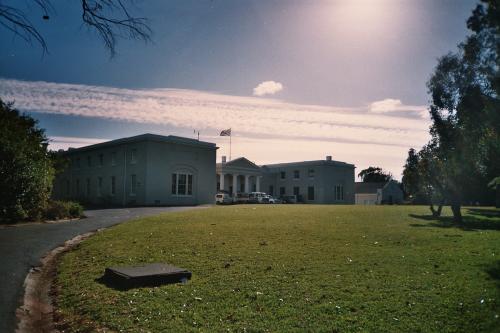|
Cape Photographic Catalogue
The Cape Photographic Catalogue (CPC) is a star catalogue containing 68,467 stars in the Southern Hemisphere whose declinations are either between −30° and −40° or between −52° and −90°. It contains positions, proper motions, magnitudes, and spectral types, and was published by the Cape Observatory South African Astronomical Observatory (SAAO) is the national centre for optical and infrared astronomy in South Africa. It was established in 1972. The observatory is run by the National Research Foundation of South Africa. The facility's funct ... between 1954 and 1968. This was the last major astronomical catalogue to be assembled without the use of photoelectric sequences. This catalogue was conceived by H. S. Jones and undertaken by R. H. Stoy in 1938 under the direction of J. Jackson. The photographic plates were taken using the Cape twin photometric cameras, cataloguing stars down to about magnitude 11. References Further reading * Astronomical catalogues o ... [...More Info...] [...Related Items...] OR: [Wikipedia] [Google] [Baidu] |
Star Catalogue
A star catalogue is an astronomical catalogue that lists stars. In astronomy, many stars are referred to simply by catalogue numbers. There are a great many different star catalogues which have been produced for different purposes over the years, and this article covers only some of the more frequently quoted ones. Star catalogues were compiled by many different ancient people, including the Babylonians, Greeks, Chinese, Persians, and Arabs. They were sometimes accompanied by a star chart for illustration. Most modern catalogues are available in electronic format and can be freely downloaded from space agencies' data centres. The largest is being compiled from the spacecraft Gaia and thus far has over a billion stars. Completeness and accuracy are described by the faintest limiting magnitude V (largest number) and the accuracy of the positions. Historical catalogues Ancient Near East From their existing records, it is known that the ancient Egyptians recorded the names of on ... [...More Info...] [...Related Items...] OR: [Wikipedia] [Google] [Baidu] |
Cape Observatory
South African Astronomical Observatory (SAAO) is the national centre for optical and infrared astronomy in South Africa. It was established in 1972. The observatory is run by the National Research Foundation of South Africa. The facility's function is to conduct research in astronomy and astrophysics. The primary telescopes are located in Sutherland, which is from Observatory, Cape Town, where the headquarters is located. The SAAO has links worldwide for scientific and technological collaboration. Instrumental contributions from the South African Astronomical Observatory include the development of a spherical aberration corrector and the Southern African Large Telescope (SALT). The Noon Gun on Cape Town's Signal Hill is fired remotely by a time signal from the Observatory. History The history of the SAAO began when the Royal Observatory at the Cape of Good Hope was founded in 1820, the first scientific institution in Africa. Construction of the main buildings was complet ... [...More Info...] [...Related Items...] OR: [Wikipedia] [Google] [Baidu] |
Harold Spencer Jones
Sir Harold Spencer Jones KBE FRS FRSE PRAS (29 March 1890 – 3 November 1960) was an English astronomer. He became renowned as an authority on positional astronomy and served as the tenth Astronomer Royal for 23 years. Although born "Jones", his surname became "Spencer Jones". Early life Harold Spencer Jones was born in Kensington, London, on 29 March 1890. His father, Henry Charles Jones, was an accountant and his mother, Sarah Ryland, had earlier worked as a school teacher. He was educated at Latymer Upper School, in Hammersmith, West London, from where he obtained a scholarship to Jesus College, Cambridge. He graduated there in 1911, and was awarded a postgraduate studentship. He subsequently became a Fellow of the college. Chief Assistant at the Royal Observatory, Greenwich, 1913–1923 In 1913 he was appointed Chief Assistant at the Royal Observatory, Greenwich, filling a vacancy created by the departure of Arthur Eddington to become Plumian Professor of Ast ... [...More Info...] [...Related Items...] OR: [Wikipedia] [Google] [Baidu] |
John Jackson (astronomer)
John Jackson (11 February 1887 – 9 December 1958) was a Scottish astronomer. He was awarded The Gold Medal of the Royal Astronomical Society for his work on stellar parallaxes and star positions. Early life and education Born on 11 February 1887 at Mossvale Street, Paisley, Renfrewshire, Scotland, John Jackson was educated at Paisley Grammar School, studying a range of subjects including the sciences and French and German, but not Latin or Greek, which were compulsory if he intended to sit the entrance examinations for university. Having excelled at science, in particular chemistry, he decided to try for the entrance exam for Glasgow University in spite of not studying the classics. During the summer of 1903 he studied hard to improve his knowledge of Latin, which saw him pass the university entrance exam sufficiently well to be awarded a £25 bursary. Graduating in 1907 with a first class honours Master of Arts degree in mathematics and natural philosophy, he was then aw ... [...More Info...] [...Related Items...] OR: [Wikipedia] [Google] [Baidu] |


